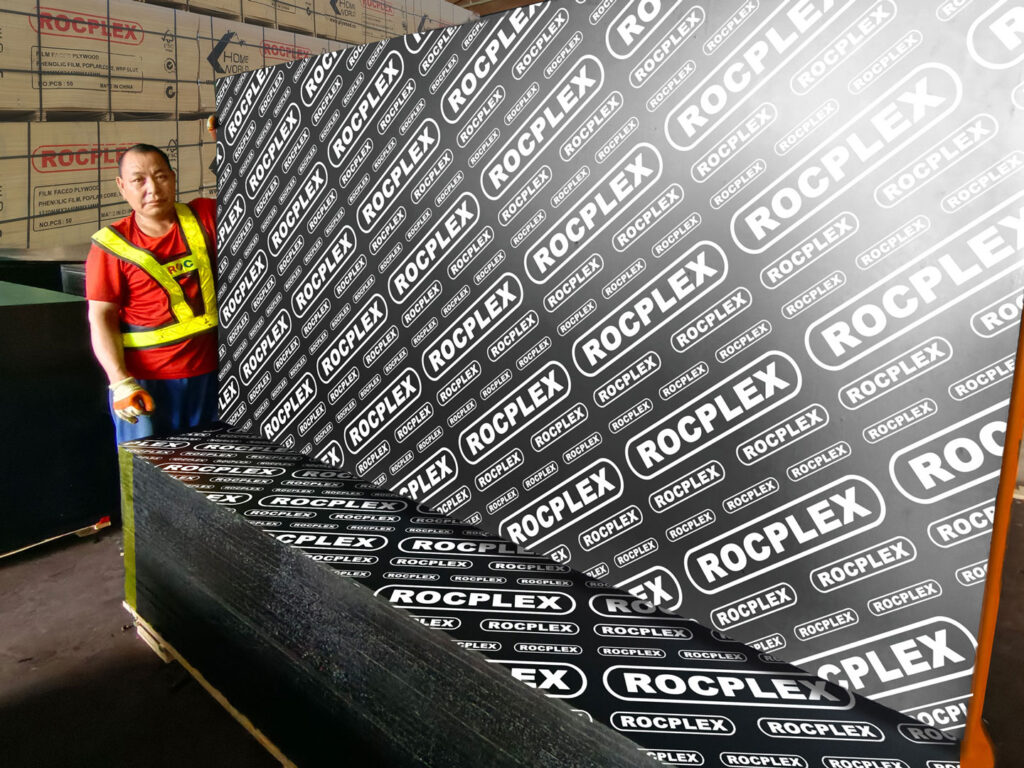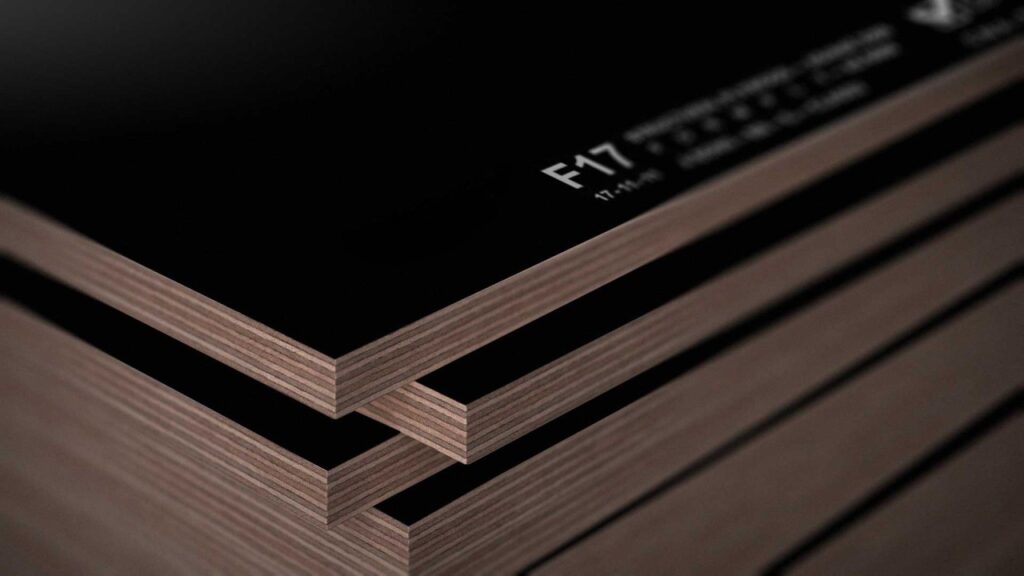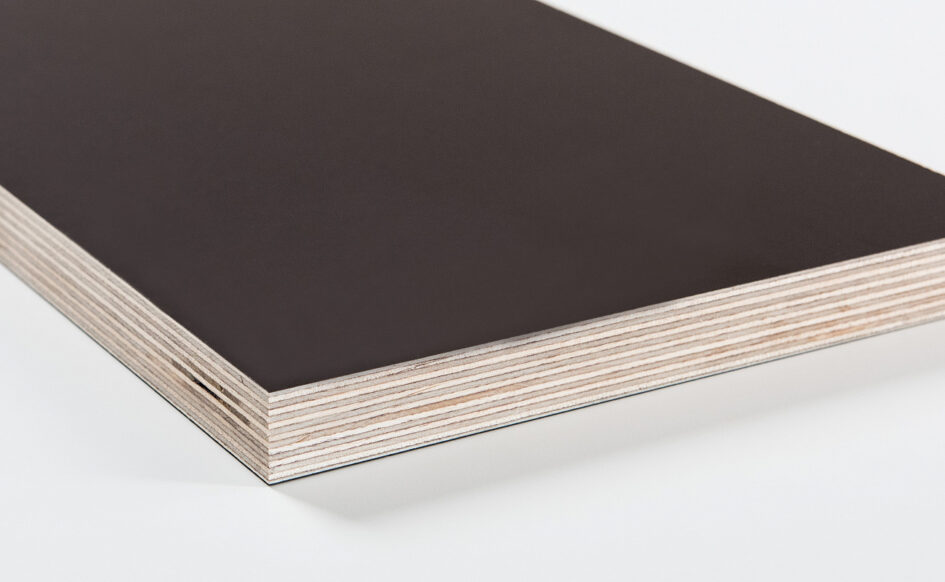Formwork plywood is a key component in modern building designs. Its versatility, durability, and cost-effectiveness make it the preferred choice for architects and construction professionals. In this article, we will explore the various benefits of using formwork plywood and how it has evolved in the field of construction.
Understanding Formwork Plywood
Definition and Key Features of Formwork Plywood
Formwork plywood refers to a type of plywood that is specifically designed for temporary structural applications. Formwork plywood also called formply and is commonly used in concrete formwork systems to provide support and shape to the concrete until it sets and gains sufficient strength. Formwork plywood is typically made from high-quality timber veneers or sometimes even from engineered wood products. It is known for its excellent strength, dimensional stability, and resistance to moisture and weather conditions.
The key features of formwork plywood include high load-bearing capacity, ability to withstand heavy usage, and a smooth surface finish that ensures accurate concrete shaping. These features make it an ideal choice for creating sturdy and reliable formwork structures that can withstand the pressure exerted by wet concrete. Click here to get also about what are the best concrete services for your project?.
The Evolution of Formwork Plywood in Construction
Formwork plywood has come a long way since its inception in the construction industry. In the early days, traditional timber formwork was predominantly used, which posed challenges in terms of durability and reusability. However, with advancements in technology and material science, formwork plywood has emerged as a game-changer in modern building designs.
The use of formwork plywood has revolutionized the construction process by offering improved strength, reduced labor costs, and enhanced efficiency. Modern formwork plywood is specifically engineered to withstand the demanding conditions of construction sites, ensuring longevity and reliability in even the most challenging projects.
One of the significant advancements in formwork plywood is the development of special coatings that enhance its durability and resistance to wear and tear. These coatings provide an extra layer of protection against moisture, chemicals, and abrasion, prolonging the lifespan of the formwork plywood and reducing the need for frequent replacements.
Another notable evolution in formwork plywood is the introduction of innovative designs that allow for easy assembly and disassembly. This not only saves time during the construction process but also promotes sustainability by enabling the reuse of formwork plywood in multiple projects. With the ability to be dismantled and reassembled, formwork plywood contributes to reducing waste and minimizing the environmental impact of construction activities.
The Role of Formwork Plywood in Modern Building Designs
Formwork Plywood in Architectural Aesthetics
Besides its functional aspects, formwork plywood also plays a crucial role in achieving desirable architectural aesthetics. The smooth surface finish of the plywood transfers to the concrete, resulting in sleek and visually pleasing designs. Architects and designers can create unique patterns and textures using formwork plywood, adding a touch of elegance and sophistication to the final structure.
Moreover, formwork plywood provides versatility in terms of shape and form. It can be easily cut and molded to various sizes and contours, enabling architects to bring their creative vision to life. From curved walls to intricate designs, formwork plywood offers endless possibilities for architectural expression.
Imagine a modern building with a stunning facade, characterized by intricate geometric patterns that seem to dance in the sunlight. This captivating visual effect is made possible by the use of formwork plywood. By carefully selecting the type and texture of the plywood, architects can create a mesmerizing interplay of light and shadow, enhancing the overall aesthetic appeal of the structure.

Structural Benefits of Formwork Plywood
Formwork plywood is not just about aesthetics; it also offers significant structural benefits. Its high load-bearing capacity allows it to support heavy concrete loads, ensuring the structural integrity of the building. With the right formwork plywood in place, construction professionals can create robust structures that can withstand external forces and meet safety standards.
Furthermore, the dimensional stability of formwork plywood minimizes the risk of deformation or warping during the concrete curing process. This ensures that the final structure maintains its shape and alignment, resulting in a well-built and visually appealing building.
Picture a bustling city skyline, dotted with skyscrapers that stand tall and proud. These architectural marvels owe their strength and stability to the use of formwork plywood. By providing a reliable support system, formwork plywood enables construction teams to create towering structures that can withstand the test of time. From the foundation to the uppermost floors, the structural integrity of these buildings is reinforced by the use of high-quality formwork plywood.
Advantages of Using Formwork Plywood
When it comes to construction, the choice of materials plays a crucial role in determining the success and longevity of a project. Formwork plywood, with its exceptional durability and strength, has emerged as a popular choice among construction professionals. Let’s delve deeper into the advantages of using formwork plywood and explore why it has become a go-to option for many.
Durability and Strength
One of the primary advantages of formwork plywood is its exceptional durability and strength. Unlike traditional timber formwork, which may degrade over time, formwork plywood offers superior resistance to wear, tear, and moisture. It can withstand repeated use and exposure to harsh construction site conditions, making it a reliable choice for long-term projects.
Imagine constructing a towering skyscraper or a sprawling bridge. The inherent strength of formwork plywood allows construction professionals to create such tall structures and large open spaces without compromising stability. This durability factor ensures that the formwork will not fail during the concrete pouring and curing process, leading to a safer working environment for the construction team.
Cost-Effectiveness and Sustainability
Formwork plywood is known for its cost-effectiveness compared to other formwork materials. Its reusability makes it an economical choice, as it can be dismantled, cleaned, and used again for future projects. This reduces the overall construction costs, as there is no need for frequent replacement or additional expenditures on formwork systems.
But the advantages of formwork plywood extend beyond its economic value. It is considered an environmentally sustainable option as well. It is made from renewable resources and can be recycled or repurposed after its useful life. By opting for formwork plywood, architects and construction professionals can contribute to green building practices and minimize their ecological footprint.
Versatility and Ease of Use
Formwork plywood offers unmatched versatility in terms of design and application. Its flexibility allows it to adapt to different project requirements and architectural visions. From residential buildings to commercial complexes, formwork plywood can be used in various construction projects, catering to diverse needs and design preferences.
Furthermore, formwork plywood is not only durable and cost-effective but also user-friendly and easy to handle. Its lightweight nature makes it convenient to transport and assemble, saving both time and effort on the construction site. Construction teams can set up formwork systems efficiently, ensuring smooth progress and timely project completion.
So, whether you’re constructing a high-rise building or a small-scale residential project, formwork plywood proves to be a reliable, cost-effective, and sustainable choice that offers durability, strength, versatility, and ease of use. It’s no wonder that it has become a preferred material for construction professionals worldwide.
Potential Drawbacks and Solutions
Common Challenges with Formwork Plywood
While formwork plywood offers numerous advantages, it is important to address the potential challenges that can arise during its usage. The main concerns include surface imperfections, compatibility with form release agents, and the risk of delamination.
Surface imperfections such as splinters or rough patches can affect the final concrete finish. To mitigate this issue, construction professionals can meticulously inspect the plywood surface, ensuring any flaws are addressed before pouring the concrete. This attention to detail not only enhances the aesthetic appeal of the finished product but also ensures the structural integrity of the formwork.

Compatibility with form release agents should also be taken into consideration. Some release agents may react with the formwork plywood, causing surface discoloration. Testing the compatibility beforehand can prevent any unwanted reactions and maintain the desired appearance of the concrete. By conducting thorough research and consulting with experts, construction professionals can identify the most suitable form release agents for their specific project requirements.
Delamination, which refers to the separation of layers within the plywood, can compromise the structural integrity of the formwork. This issue can be minimized by using high-quality formwork plywood and ensuring proper installation and maintenance throughout the construction process. By investing in premium-grade plywood that meets industry standards, construction professionals can significantly reduce the risk of delamination and ensure the longevity of their formwork.
Overcoming Potential Drawbacks
To overcome the potential challenges associated with formwork plywood, construction professionals should prioritize quality and proper maintenance. Properly graded and certified formwork plywood should be chosen to ensure optimum performance and longevity. By selecting plywood that meets or exceeds the required standards, construction professionals can have peace of mind knowing that their formwork will withstand the demanding conditions of the construction site.
Regular inspections and timely repairs of formwork plywood can prevent any issues from escalating. By implementing a proactive maintenance schedule, construction professionals can identify and address any signs of wear and tear before they become major problems. This not only saves time and money but also ensures the safety of workers and the success of the project.
Implementing appropriate storage techniques and protecting the plywood from excessive moisture or direct sunlight can significantly extend its lifespan and maintain its structural integrity. Storing formwork plywood in a dry and well-ventilated area, away from direct sunlight, can prevent moisture absorption and minimize the risk of warping or swelling. Additionally, covering the plywood with a tarp or using protective coatings can provide an extra layer of defense against environmental factors.
Future Trends in Formwork Plywood Use
Technological Innovations Impacting Formwork Plywood
The construction industry is constantly evolving, and technology plays a crucial role in shaping the future of formwork plywood. Advancements such as automated formwork systems and digital modeling tools are revolutionizing the way formwork is designed, fabricated, and installed.
Automated formwork systems utilize robotics and computerized controls to streamline the construction process. This not only improves efficiency but also enhances safety by reducing the reliance on manual labor for formwork assembly.
Moreover, digital modeling tools enable architects and construction professionals to visualize and simulate formwork designs in a virtual environment. This allows for better coordination and accuracy, minimizing errors and optimizing material usage.
Predicted Developments in Formwork Plywood Usage
As sustainable construction practices gain momentum, the demand for environmentally friendly formwork plywood is expected to rise. Manufacturers are exploring greener alternatives, such as formwork plywood made from recycled materials or utilizing adhesives with lower formaldehyde content.
Additionally, advancements in material science may lead to the development of formwork plywood with enhanced properties, such as improved fire resistance or increased load-bearing capacity. These innovations will further enhance the performance and reliability of formwork plywood in modern building designs.In conclusion, formwork plywood offers a multitude of benefits in modern building designs. Its versatility, durability, and cost-effectiveness make it an indispensable tool for architects and construction professionals. From its role in achieving architectural aesthetics to its structural advantages, formwork plywood continues to evolve and shape the construction industry. As technology advances and sustainability becomes a driving force, we can expect exciting developments in formwork plywood usage, further revolutionizing the way we build our future structures.

Leave a Reply